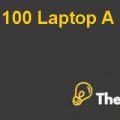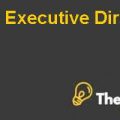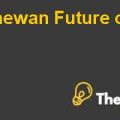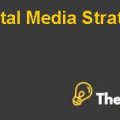
Intuit QuickBooks: From Product to Platform
Problem Statement:
Intuit being a successful provider of financial management software products for medium sized and small sized businesses and is thinking of expanding its process business by making an effort to change from a conventional product based process operating business to a platform based that uses network effects that create a POD (Point of difference) competitive advantage.
The questions that Intuit faces are the level to which it should devote spending in its initiatives of platform conversion and the right amount of resources it decides to allocate on various product and platform offerings, and the most contributing and profitable business model for each of its platform efforts and prepositions.
Internal Analysis:
Value chain
This process begins by highlighting each part of the Intuits Creation process and knowing where initiatives can be taken for improvements which can result in cost reduction or increased level of output resulting in utmost consumer satisfaction derived from the benefits that consumers receive from the product at the lowest price, which enhances the organizations base line in the long term approach.
Support processes:
Firm infrastructure:
The organizational infrastructure includes all the departments in the hierarchy, which are termed as administrative, financial & Accounting, Marketing& Sales, PR, and Legal affairs. All the departments from lower to upper management and to where steps can be taken to increase their processes.
Human Resource Management:
This stage includes the selection of the best pool of candidates that fit the job description and requirements and taking steps to train them in every possible way to increase and enhance their ability to work in the organization to produce more output and also taking care of the employees so they stay retentive in the firm.
The Human Resource management has made operating values to ensure these above mentioned processes.
- Integrity without Compromise
Intuit values integrity without compromise as they hold themselves with the highest standards, making actions and communication direct putting honest upfront with transparency.
- Delight Costumers
Intuit believes in putting customers before and ahead and pleasing them at every cost and making their experience with Intuit delightful so customers can be more than satisfied and brand loyalty can be achieved.
- It’s the People
Valuing growth, team work and diversity in the organization.
- Innovative and Improve
Innovation is the key factor to move ahead and stay ahead rather than being stagnant. Taking risk towards growth takes courage and that courage is within Intuit. Innovation is made and with this we move ahead with speed.
- Own the Outcome
Being accountable for everything and bring about better results.
- We Care and Give Back
Caring for the environment and giving something in return to communities. Making people participate collectively with a meaningful impact.
Technology Development:
This involves the process of continuous development and innovation of new products and modification and upgrading of existing products. Identifying consumer needs and coming up with products the fits those needs.
Procurement of Resources:
This includes the process of seeking products from different suppliers and vendors or some other parties. In this process it is essential to know what type and kind of suppliers exist in the market place and how to evaluate them and negotiate with them for a better outcome of the business.
Primary Business Processes:
Inbound Logistics:
This encapsulates the control of inventory, i.e., all the business and financial management software’s to the storage the reception and the transportation planning. Finding out means to better carry out these processes to avoid glitches is very important.
Operations:
The everyday actions performed in the organization to meet the daily business requirements are termed as operations. Reaching more consumers to identify and meet their needs.
Outbound Logistics:
The order fulfillment, transportation and distribution. For this process Intuit solely relied on a single supplier Harland Clarke to fulfill orders of financial supplies that it sold to consumers.
Marketing and sales:
To market its financial products it mainly relied on a print advertising campaign to aware consumers about their services.
Service:
It is the action of helping its consumer’s throughout. Identifying their needs and providing them with the product giving after sales assistance if the system crashes or glitches occur. But no clear after sales service outline is mentioned in Intuit.
By enhancing the support and primary processes a competitive edge can be achieved.
VRIN model:
This model is helpful in determining if a particular source is whether a source that results in competitive edge and for this to occur the resources must be,
- Valuable
If the source is of greater value in relation to the cost and the benefits that it promises to give.
- Rare
The implication that the source is rare in nature.
- Inimitable
The source is not easy and difficult to copy.
- No substitutable
The other types of resources that can be termed as the substitute of the resource.
Using the Value Chain and the Vrin model creates a edge over the competition present in the market and create a POD for the Organization and uses the POD of another organization as their POP (Points of Parity) and this leads to more predictive success.
External Analysis:
PEST:
Political:
The external environment for Intuit in terms of political correspondence is very stable in nature as political interface does not affect the working of Intuit and harm its business stability.
Economic:
The economic situation in terms of market also seems quite stable in nature and business can be derived by penetrating into the market at some level.
Social:
The social environment seems very adaptable towards the financial management software’s and seeks the utilization of theses software’s to solve their financial problems.
Technological:
The technology is changing and to keep on moving and not staying static its necessary to keep innovating, as Intuit as the opportunity to shift to cloud and mobile technology.
Five Forces of Competition:
Threat of new entrants:
New entrants in the marketplace seem more than a little moderate as recently companies like Xero and Kabbage have easily entered the market place with ease and with small entrepreneurial companies increasing to stay competitive has never been so important.
Bargaining power of Supplies:
The power of supplier is very low as it solely relies on Harland Clarke for this purpose as in terms of loyalty and long term relation, the switch can be made easily leave supplier behind.
Threats of substitute products and services:
It is high as Microsoft posses substitute softwares as it’s a large big corporation with tons of credibility and with following Xero and Kabbage also providing similar products, so to stay on top and stay ahead is very crucial.
Bargaining Power of Buyers:
The power of bargaining with respect to buyers is very high as there are so many options to choose from and comparing them has never been so easy.
Rivalry among existing Competitors:
The rivalry among the competitors within this similar market is quietly intense with Microsoft being the toughest rival and following on to Xero and Kabbage.
Alternatives and Recommendations:
Three models are highlighted in the case study, but the best two models that can be used by Intuit which will be beneficial in monetary terms are the following:
1) The first model to some extent has a resemblance to Google’s AdWords except it has targeted small medium businesses as a replacement for internet users. Intuit has the opportunity to build an open marketplace in which the right to display advertisements would be exhibited by third parties and they would bid for the display of ads. Furthermore the data from QuickBooks can be used to make visible to SMB customers taking in account the most suitable offering and also bids of third party providers.
Pros:
- More Market coverage
- Data usage for generating revenue
- Creating Competitive edge
- More awareness of firm
- Opportunity for increasing revenue
Cons:
- Increased Expenditure on Advertising
- Involvement of third party
- Sharing of Revenue
2) Second model Intuit is using the data of QuickBooks to indentify small medium business patterns of spending that may create a level of interest in the third party providers. The firm would pre-negotiate offers that seem appealing with select providers based on data patterns. The relevant offers would be shown to targeted audience customers whether on a different separate website linked from QuickBooks or either directly in QuickBooks
Pros:
- Usage of data for revenue generation
- Increasing profit
- Usage of QuickBooks data
Cons:
- Extensive Research
- Time Utilizing
- Third party involvement
- Data privacy
Recommended Alternative:
The second model seems good as it requires no cost to initiate but effort, the effort that knowing and identifying the needs of third parties needs of data that would be made visible at a particular cost, it requires research and understanding the third parties that are present in the market in search of data that would be relevant to them to make effective decisions. To understand consumers in very essential to find the gap in the market and minimize and eradicate the gap leads to monetary benefit and market leadership. For this it is also important to broaden your view from consumer centric approach to third party business approach.
When making data visible to third parties it also important to analyze where the data should be made visible, at a different link from QuickBooks or directly in QuickBooks. This should be according to third party needs....
This is just a sample partial case solution. Please place the order on the website to order your own originally done case solution.













